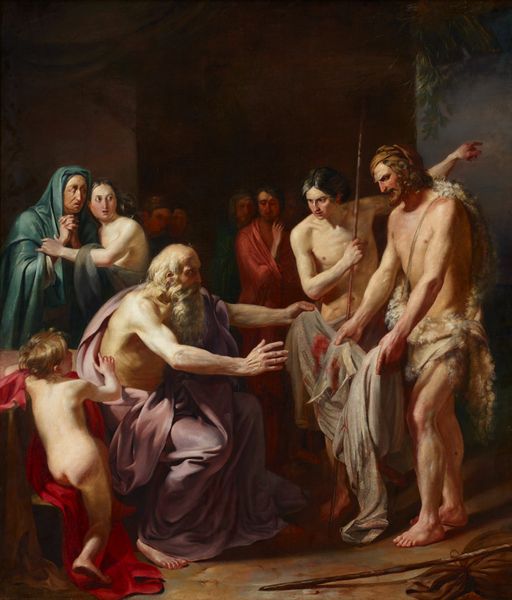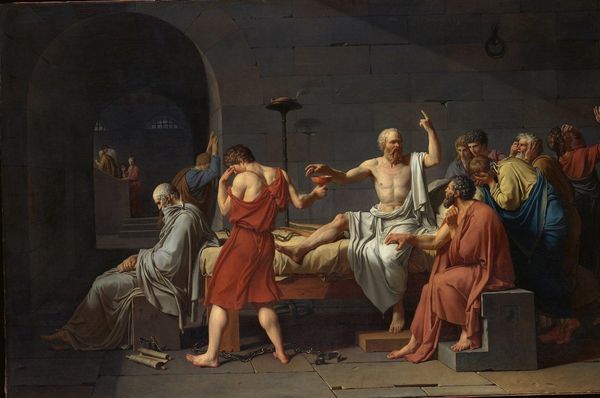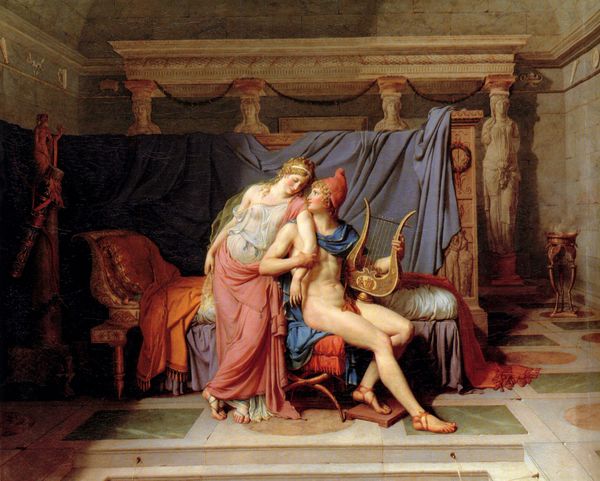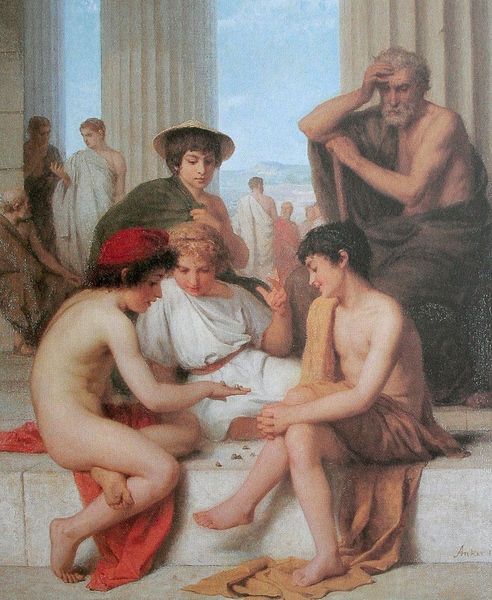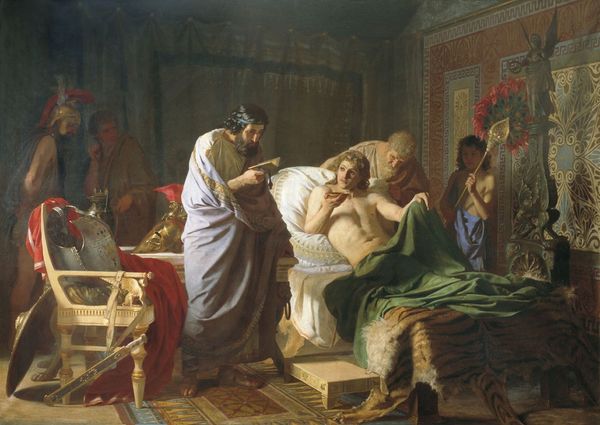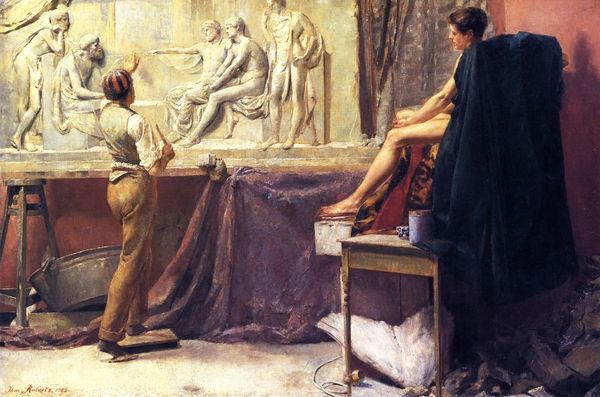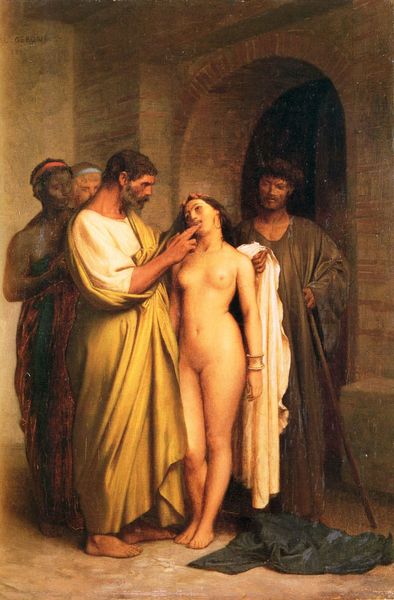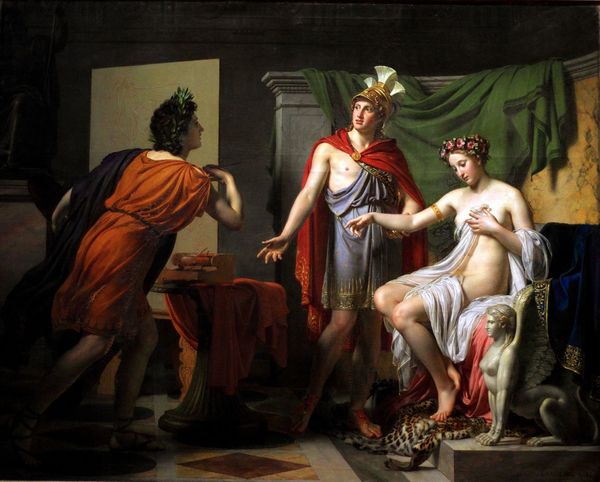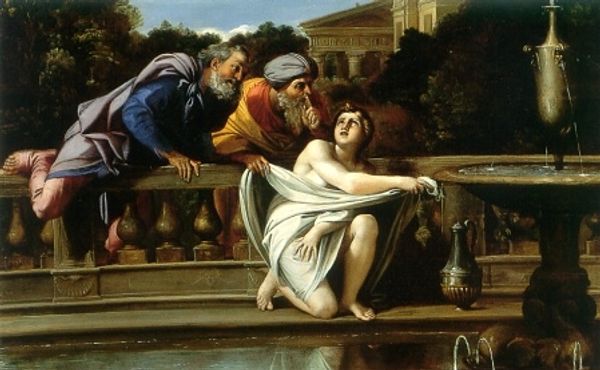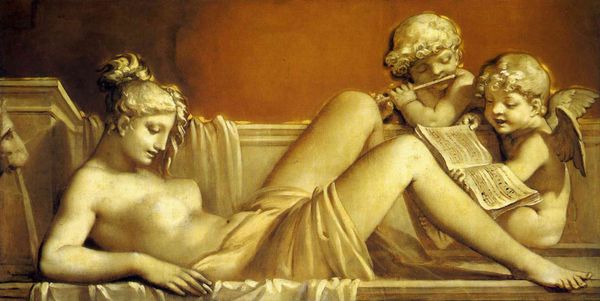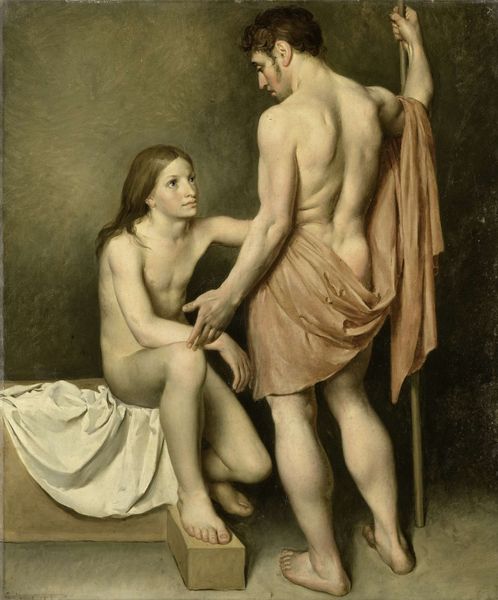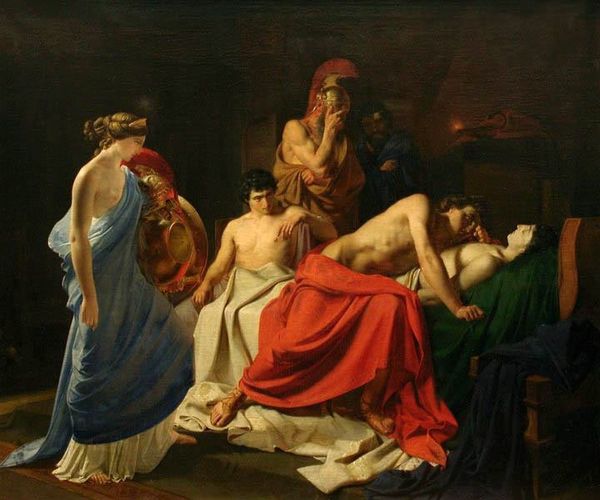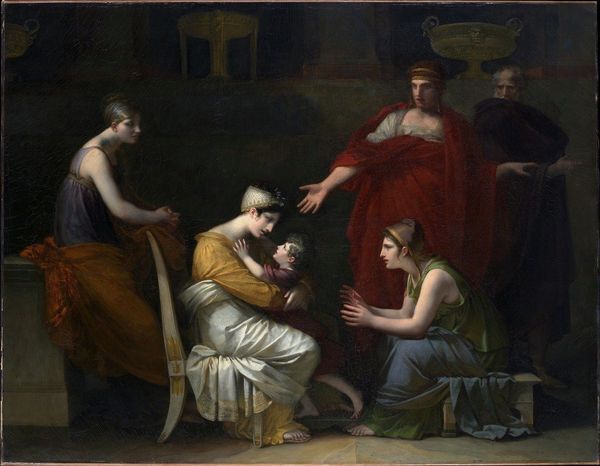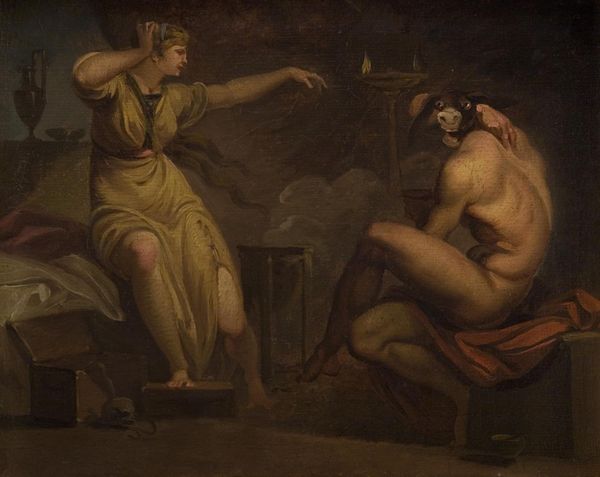
oil-paint
#
portrait
#
neoclacissism
#
oil-paint
#
greek-and-roman-art
#
classical-realism
#
figuration
#
oil painting
#
mythology
#
history-painting
#
academic-art
Copyright: Public Domain: Artvee
Curator: Here we have Christoffer Wilhelm Eckersberg's painting, "Socrates and Alcibiades," completed between 1813 and 1816. What's your first reaction to it? Editor: Stark. It's dominated by ochre hues, almost monochromatic, creating a very still and contemplative atmosphere. There is also this fascinating contrast in their bodies, as the light almost completely exposes Alcibiades, making him vulnerable, while Socrates’ body remains draped. Curator: That sense of vulnerability is key, especially considering the historical and social context. Socrates, a philosopher known for challenging Athenian norms, and Alcibiades, a prominent statesman, were caught in the turbulent politics of the Peloponnesian War era. The younger man, though powerful, becomes a project of mentorship to the elder and that puts them at odds with the existing powers. Editor: Looking closely, their gestures are so telling. Socrates' outstretched hand almost seems to both offer something and demand something from Alcibiades, doesn't it? It’s so different from the relaxed confidence you expect of a political and military leader, and so telling of their asymmetrical dynamic. What might that hand symbolize? Curator: I think it encapsulates the Socratic method itself, of interrogation. It highlights the complex, often fraught relationship between mentor and protégé, particularly within power structures. Remember, Alcibiades’ controversial choices later in life led to his ostracization. Editor: Right. And seeing these two figures together evokes the complex interplay of knowledge, power, and morality, then and even now. I’m drawn to how Eckersberg uses these loaded symbols of dress, like the toga and the headdress, which make us feel very present to these tensions between the private intellectual life and the naked performance of citizenship. Curator: Eckersberg, working in the Neoclassical style, often used historical or mythological subjects to comment on contemporary issues of leadership, responsibility, and morality, so that interplay feels intrinsic to his project as an artist invested in social change. Editor: I hadn’t considered that, but your insight makes their quiet conversation even more resonant. A powerful painting in its starkness and symbolism. Curator: Absolutely. It challenges us to look beyond the surface and consider the profound complexities embedded in relationships of influence.
Comments
No comments
Be the first to comment and join the conversation on the ultimate creative platform.
